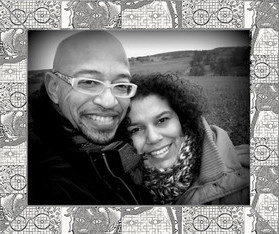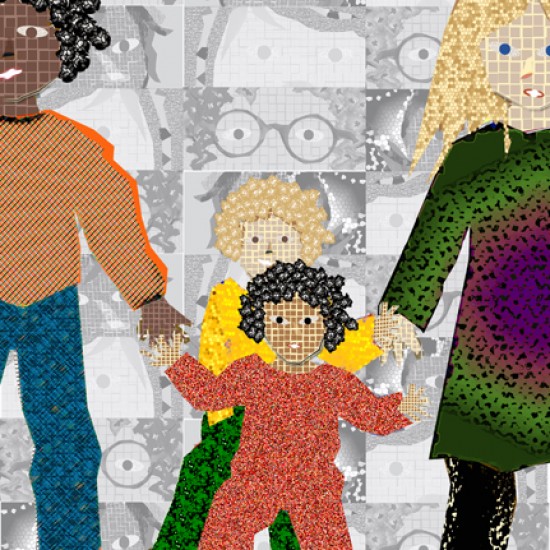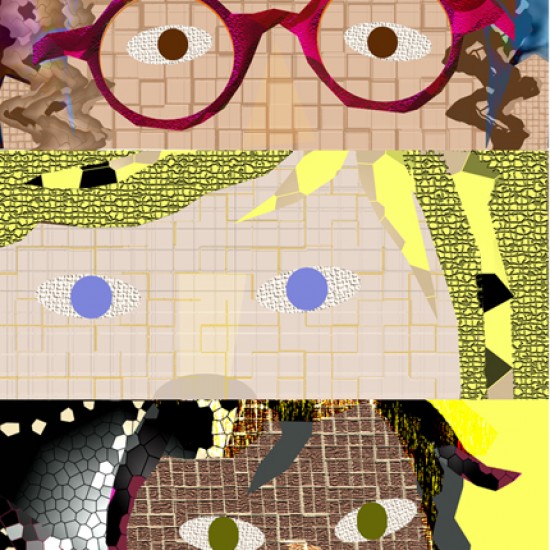My mother was light years ahead of the curve. I am grateful that she had an understanding of what people are realizing today. We are realizing the importance for children to see themselves culturally reflected and represented in literature, film, and art. She recognized that growing up in in the U.S. meant my perspective, voice, and identity were not the norm or dominant voice of American culture. The flip side of this idea is also equally important. It is also important for children that do not belong to minority or underrepresented groups to be exposed to multi-cultural or diverse literature. “Multicultural literature also creates a community within the classroom because students learn not only the differences tolerated, they are also embraced.” (Boles, 2006)
My mother was aware of the potentially negative effects of cultural hegemony. Both Marx and Weber explain and describe the idea that in a culturally or racially diverse society, the ruling class will dominate and manipulate the culture of that society. The fact that flesh colored Band-Aids were initially introduced in only one color is a very simple and concrete example of this idea. If you want to have a very clear understanding of this, imagine a very dark-skinned person wearing a very white “flesh-colored” Band-Aid. This Band-Aid stands out in obvious contrast against the dark skin. This example illustrates how the ideas and values of a single class can be projected and enforced on all the other members of the society. No matter how diverse they are, there is only one flesh-tone for them all. Today, it is clear that this has a negative effect on everyone involved; especially members of the dominant group. Children born into the dominant culture are often unnaturally confined to have very limited experiences with diversity. “Children who develop in this way are robbed of opportunities for emotional and intellectual growth, stunted in the basic development of the self, so they cannot experience or accept humanity.” (Katz, 1978)
Talking about our obvious differences has led to heated debate and often resulted in people taking the easier approach of just avoiding the subject. Fortunately, we live in a time where we are now recognizing the potential damage this can cause to an individual, especially where young children are concerned. Racism and intolerance are not the inevitable consequence of a culturally diverse society. However, encouraging children to develop empathy at a young age has the potential to have a tremendous positive impact toward fostering cultural pluralism. This is the term that describes the existence of smaller groups that are able to maintain their own unique cultural identities and values.
“Minority students feel recognized and understood when their culture is acknowledged. Students from the mainstream culture learn that there are other perspectives and ways of doing things that are just as valuable as their own.” (Boles, 2006) This can be empowering for everyone involved. “The importance of multicultural literature is even more important with younger children because they receive the majority of their messages through pictures. If children of color never see themselves in literature, will they feel devalued? Also, if the ma- jority’s culture children never see children of color in literature, will they not develop nega- tive attitudes about children who do not look like them (Boles, 2006)?”
What made my mother light years ahead? It was the fact that she talked to us about race or differences in a positive and affirming way. She taught us as children to appreciate ourselves within context of our diverse family and comminity. The flip side of this was that she also taught us to respect others regardless of how different they may be. She recognized that the dominant culture did not reflect us by default. Therefore, she made sure we were exposed stories, ideas, and history that reflected who we are. In short, she provided a mirror in which we could see ourselves reflected in society.
However, it didn’t stop there. As children we were also exposed to a variety of cultures. For example, we were enrolled in a Spanish class outside of our normal studies at a very young age. Spanish does not necessarily represent our cultural heritage. However, it did give us a healthy feeling and orientation toward people for whom Spanish was an integral part of their culture. This opened us up and made it possible for us to connect on a deeper level with a variety of different groups. We learned and understood that different people have much more in common than one might at first glance imagine. Every child needs to be exposed to their own culture and other cultures to have a healthy appreciation of the world. They should be able to see themselves and others in stories and literature. Literature, film and art should accurately reflect the diversity of the society in which we live. Not doing so can produce an unconscious fear in children of people that are different from themselves. (Derman- Sparks,Higa,Sparks)
We grew up with the knowledge and understanding that the world is diverse and multi- cultural. We hope to bring this same understanding to children in our book Colorful, different and the same…like you and me. We hope that children everywhere can see themselves and others with an openness and understanding that is both informative and empowering. We also attempt to illustrate that differences are a fundamental part of nature. Understanding, accepting, and celebrating our differences as well as our commonalities is empowering. After all, we are colorful, different, and the same.
Sources:
Boles, M. (2006). The Effects of Multicultural Literature in the Classroom. Digital Commons @ EMU, Paper 62. Retrieved June 19,2016, from http://commons.emich.edu
White Awareness: Handbook for Anti-Racism Training by Judy Katz (University of Oklahoma Press, 1978), page 12 – 14 Children, Race and Racism: How Race Awareness Develops By Louise Derman-Sparks, Carol Tanaka Higa, Bill Sparks
 Temu and Elisabeth Diaab were inspired by love of their son to write children’s books. Writing has always been Temu’s passion and Elisabeth loves to tell stories with pictures. Their creative energy has developed naturally into artistic collaboration. Now they want to share their stories with children everywhere.
Temu and Elisabeth Diaab were inspired by love of their son to write children’s books. Writing has always been Temu’s passion and Elisabeth loves to tell stories with pictures. Their creative energy has developed naturally into artistic collaboration. Now they want to share their stories with children everywhere.
See more of their work at their website at http://diaab.de/en, and on Facebook


